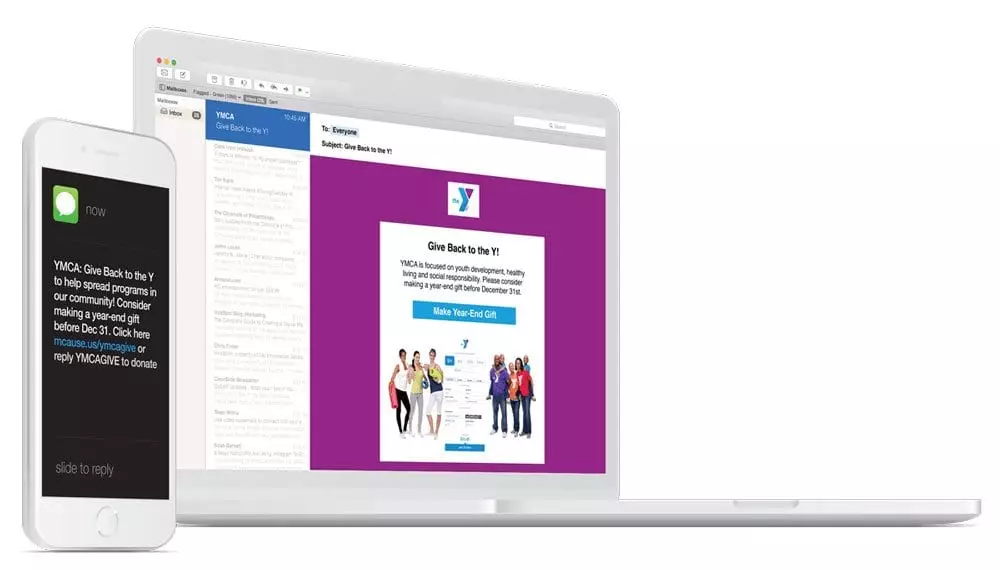10 need to know fundraising stats for 2017
Every year top organisations collect and compile data to help nonprofit organisations like yours be even more successful. This is especially important considering the rapid rate at which technology is changing the fundraising landscape, which can make it difficult for your organisation to keep up.
These stats will help you understand today’s donors and what you need to do to be able to reach them. One of the major takeaways? Being able to engage donors on their preferred channel is crucial to the success of your nonprofit.
Read on to discover the top 10 fundraising stats you need to know for 2017.
1. Bequests account for as much as 33% of fundraising revenues in the UK
Advertisement

Segmenting your messages to different groups of donors is a great way to promote bequests, and is a top online fundraising tip for all nonprofits to keep in mind. Delivering relevant content to your donors results in both higher engagement rates and higher average donations, and reduces the number of “unsubscribes” you receive.
In this case a recent survey showed the number 1 reason a bequest was arranged was because an organisation sent a message about the opportunity.
Growing your list of contacts is important in order to maintain or increase your fundraising revenue year after year. There is no guarantee that your current donors will give forever, so continually growing your audience is crucial to expanding your reach. If you can get your messages seen by more potential donors then you’ll have a higher fundraising potential.
2. 71% of nonprofits agree that social media is effective for online fundraising

Source: TechReport
If you’re looking to reach more donors online, then your organization needs to be on at least one of the three major social media networks: Facebook, Twitter and Instagram. Snapchat is also experiencing rapid growth, especially among younger generations, and will likely have a greater impact in a few years. These social media networks makes it easy to share your stories and ask for donations directly from your supporters.
Since the majority of users access social media networks on mobile phones, you’ll want to be sure you are linking to mobile-friendly donation forms to make it easy as possible for supporters to donate to your organisation right from their mobile device.
3. Facebook videos are shared 7 times more than links

Video continues to outperform all other types of links, downloads, images on all platforms. Just 60-seconds of video may equal to 1.8 million words or 3600 pages of text.
What matters most is the raw emotion you can capture on video.
Compelling video storytelling strengthens donor engagement and outreach across all your channels. Now that most people have a camera in their pocket in the shape of a smartphone, it is easier than ever to make a video and share it online.
4. Snapchat users watch 10 billion videos each day

Source: Bloomberg
57% of donors that give online watch a video before donating and will give more over time if they can see and hear the end results of their donations.
Snapchat allows you to show your supporters exactly what goes on within your organisation and how their donations will be used with live updates posted to the “My Story” section that expire after 24 hours. This immediate engagement acts an an exclusive update for supporters, and lets you show the daily ins and outs of your organisation that may not otherwise be seen.
5. Shortened subject headers in email have the highest engagement rates. (21% vs 15%)

Email is still a great way to reach your donors but it can also get lost in their inbox, especially when read on a mobile device. The most common length of a subject line is 7 words (14.0% of subject lines), however 3-word subject lines (1.6% of subject lines) have the highest engagement rates at 21.2% compared to 15.8% for 7-word subject lines.
6. 17% of online donations were made on a mobile device in 2016 versus 14% in 2015

Mobile is not going anywhere—as a matter a fact it will keep growing for many years ahead.
2016 showed a continuing trend of strong growth in online giving which grew another 8% as compared to 2015.
Mobile giving provides nonprofits new opportunities by making it easy for anyone to donate from anywhere at any time. They are no longer tied to their desktops, cash, or checks, in order to contribute to a good cause, but rather they can do so whenever they are inspired.
7. In the UK giving rose 2.8% in 2016, with online giving up 2.2%

Source: Institute of Fundraising
Comparing year after year is a good way to see what the new year will bring in terms of fundraising. Mobile and online fundraising continues to keep growing and will continue to for many years to come. This technology should be embraced by every nonprofit to save on overhead so they can spend more time doing good.
8. Millennials are nearly twice as likely to donate to charity than those aged 55+

Source: Stylus
Millennials are a giving force that should be tapped into if your organisation wants to flourish in the upcoming years. They have recently surpassed baby boomers as the largest generation in America, and with 85% of them making charitable contributions, they are definitely the generation worth targeting to get the most out of your fundraising campaigns.
9. Millennials will make up 75% of the workforce by 2025

Source: Forbes
Again, the power of millennials can’t be denied. They are a giving force that should be tapped into if your organisation wants to flourish in the upcoming years. Millennials are generous, tech savvy and are a huge part of the workforce. Put simply, they can’t afford to be ignored.
Here are some things to keep in mind when you are trying to engage this generation:
- No cash, no checks. Millennials don’t carry cash or checks and prefer giving through crowdfunding using a credit or debit card.
- Direct mail goes in the trash. This traditional form of fundraising is more of a nuisance than a call-to- action with these donors, and will likely end up thrown in the trash.
- Hold the phone calls. Text messaging is the preferred form of communication for donors under 50. Phone calls from unknown numbers are ignored and voicemails are often deleted.
10. Donations through websites, social media and apps now account for £26 in every £100 donated in the UK
It may seem obvious, but it’s worth noting that donors who have a smartphone are more likely to give to your cause through the channels mentioned above. But you still have to capture their attention in order to get them to do so.
Mobile and online solutions are a must have to engage donors who prefer to give online and rarely carry cash.
Without these cross-channel solutions, your cause can miss out on 26% of the donations.
So what’s next for your organisation?
You can sleep soundly knowing that fundraising is alive and well in 2017 with projected increases in giving all around. However, it is still up to your nonprofit to reach donors and get them to join in your cause, whether it’s through a donation or volunteering their time.
One thing is for sure: if you are serious about raising money for your cause, then you must embrace technology to captivate today’s tech-savvy donors.
Don’t be afraid and embrace these new tools to help you save you countless hours of time while also reaching more donors. Online fundraising and communication software gives you the power to amplify your efforts with solutions that target the next generation of donors across multiple channels in less time than ever before.

Steve Page is a marketer and webmaster for MobileCause, mobile and online software for the next generation of fundraising. MobileCause helps organisations of all sizes strengthen traditional and digital campaigns across mobile, social, and online channels. When he’s not at MobileCause, Steve can usually be found helping organisations with their websites, learning the latest marketing trends or working on his golf game.
- Read MobileCause’s 19 fundraising statistics imperative to understanding donor behaviours from 2016




